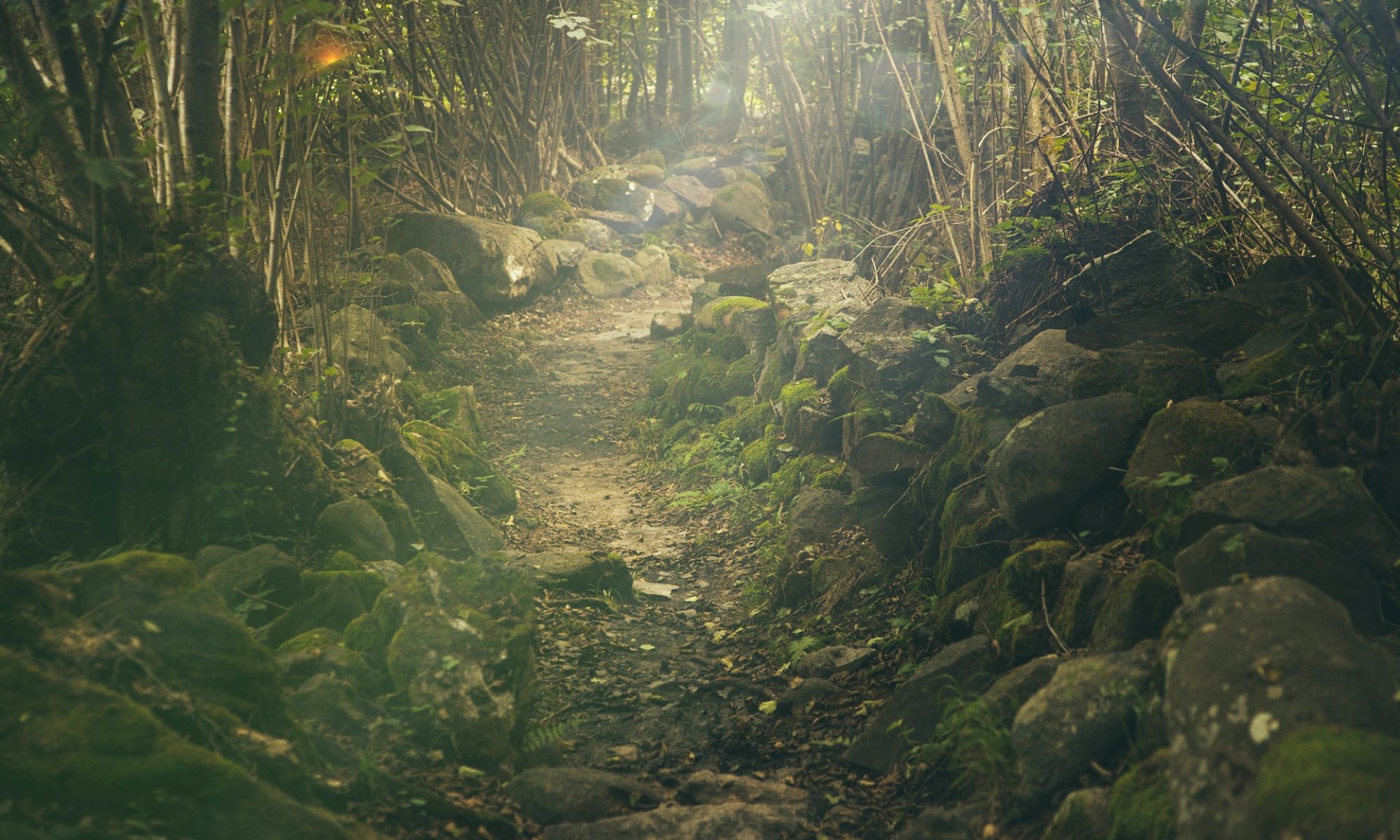So, in my last post about wands, I’d made tiny kid-size wands to make sure I knew what I was doing when it came time to make the one I wanted. I carved the bark off, made one rounded end and one pointy end, then used 100-grit and 220-grit sandpaper to make the finish silky smooth.
They came out super tiny — and I want to reiterate that this is the result of starting with a stick that’s about as wide as you think you’ll want the end result to be. Go bigger! Your wand will lose width as you remove bark and sand it smooth. Start with one that seems a little too thick, maybe the size of your thumb. The piece I ended up working with was from a long stick I’d intended for a staff, but once I started this project, it became clear that this stick was too skinny to be a staff (and one end was starting to rot anyway). I cut my wand from a long, straight section in the middle.
A little while after Ostara — so, these sticks had had a few weeks to dry indoors — I carved the bark off my wand, shaped the rounded end, and shaped the point.
I’ve left a lot of time in between steps here. Partly, that was because I didn’t want to rush things; another part was that I had my Chthonioi Alexandrian dedication over Beltane and wanted to finish the wand sometime afterward. I did not, however, wait to find out if there were tradition-specific elements that needed to be included. I’m sticking close to published information about wands in Traditional Wicca, so I don’t think I’m way off base. (If I am, I know how to make wands now. I can make another if I need to.) Also, I feel strongly that this is my wand, of my own creation, and I don’t want to carve or burn any symbols into the wood or wrap it in anything or attach crystals or feathers or anything else. I like simple and straightforward witch’s tools.
In the meantime, I also read The Witch’s Wand by Alferian Gwydion MacLir (from Llewellyn’s Witch’s Tools series). There was rather a lot of silliness about Harry Potter–style astral phoenix feather cores, as well as information about pairing stones and woods for those who do want to add to their wand, but there was also some solid info about using the wand that made the flow of energy really click for me. I couldn’t wait to finish my wand to practice with it.
Last week, I gave in to the feeling that my wand was too big somehow. Too thick, certainly, and too long as well. I took my knife again (the Opinel No. 7 that’s pictured above), cut about an inch and a half off the tip, and remade the point. (No photos of this, unfortunately.) Now the wand feels right, both in length and thickness.
This week, I began sanding it. The weather has been quite warm for May, so two days ago I sat on my back patio at sunset and spent a good hour with my wand. First I sanded it with 100-grit sandpaper, feeling the surface of the wood as the light faded until I sensed very little roughness in it. And then I tested it out energetically: letting the energy gather in the rounded end from the chakra point in my palm, then sending it through the shaft of the wand and out the tip. (I was careful to make the point in the very center of the wood for best flow. You can see the tiny core of heartwood right at the tip.) Then I cast a satisfying circle with it and just sat holding it, joining with it, falling in love with it, to be honest.
Today: Sanding again with 100-grit sandpaper, to get any rough spots left because I was working in low light last time, then 220-grit. This only took about 20 minutes of meditative work.
Six months ago, this was a living branch on a tall oak tree that’s not 20 feet from the office where I now sit, typing. When I finished sanding today, my wand was really starting to feel like a wand, not a glorified stick. I’m showing you all the photos I can, but nothing about them is as inherently magical as experiencing the process of making this tool.
It’s so smooth now — and I’m not even done. The fine-grit sandpaper pack I bought had some 220, 320, and 400, so I’ll give it a pass with each grit before I start finishing.
The kids’ wands were finished with a coat of boiled linseed oil every day for 7 days, then a coat of beeswax polish that I’ll use to maintain them. Or, at least, that was the plan. To apply the oil, you’re supposed to rub it on with a rag, let it sit for 5-10 minutes, then wipe off any excess. I don’t think I did the wiping off excess part right. Either that or I didn’t let it dry completely before applying the beeswax, because the kids’ wands are still the slightest bit tacky to the touch. I may take another piece of wood and test applying the oil, then waiting a week before applying the wax, to see if that prevents the sticky feeling.
Here’s what the kids’ wands looked like after finishing, next to my wand before sanding (and a quarter for scale).

I’m thoroughly enjoying this process.

One Reply to “Further wand update”